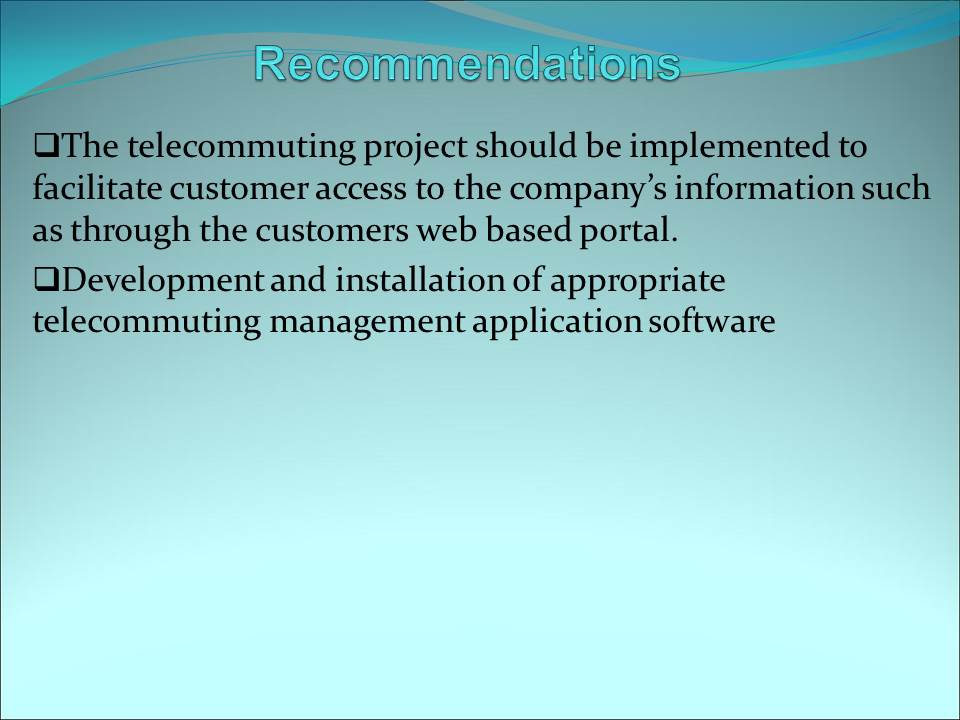Introduction
IS development depends on the technological changes and so is the management of IS.
IS design must be tailored to meet the business requirements, information needs and the goals and objectives of the business organization.
The present competitive nature of the market requires the use of information technology in the design of IS, and therefore the business enterprise must have the required IT strategic plan in its IS.
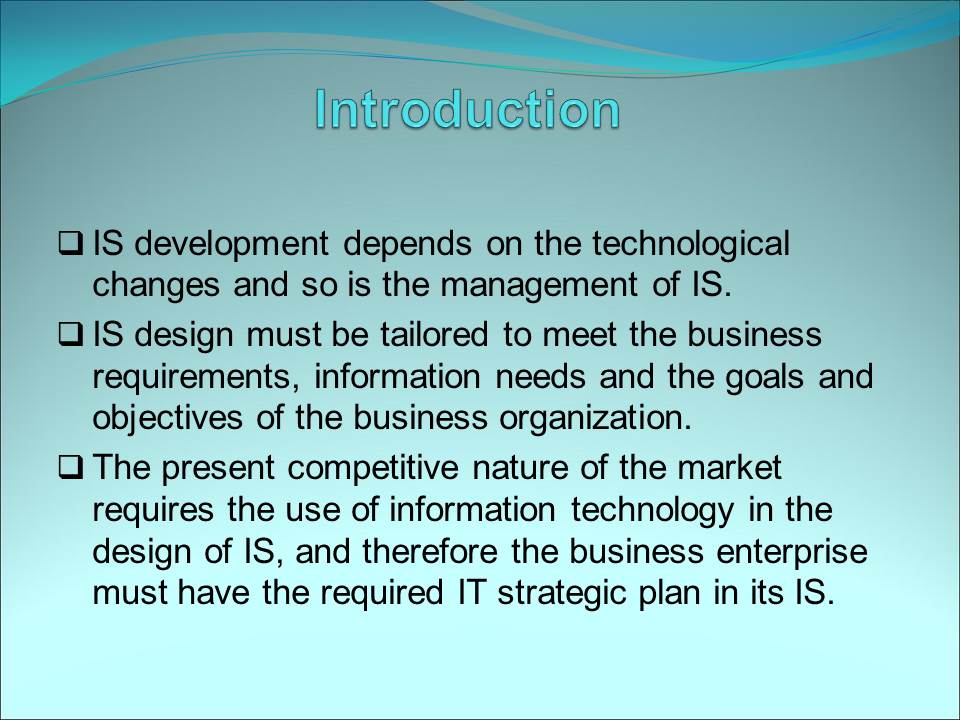
Information system management
Information is a business asset and therefore requires effective management strategies.
Challenges in IS management
Dynamic and ever changing nature of Information Technology; therefore IBM- Indiana has to revise is management strategies every now and then.
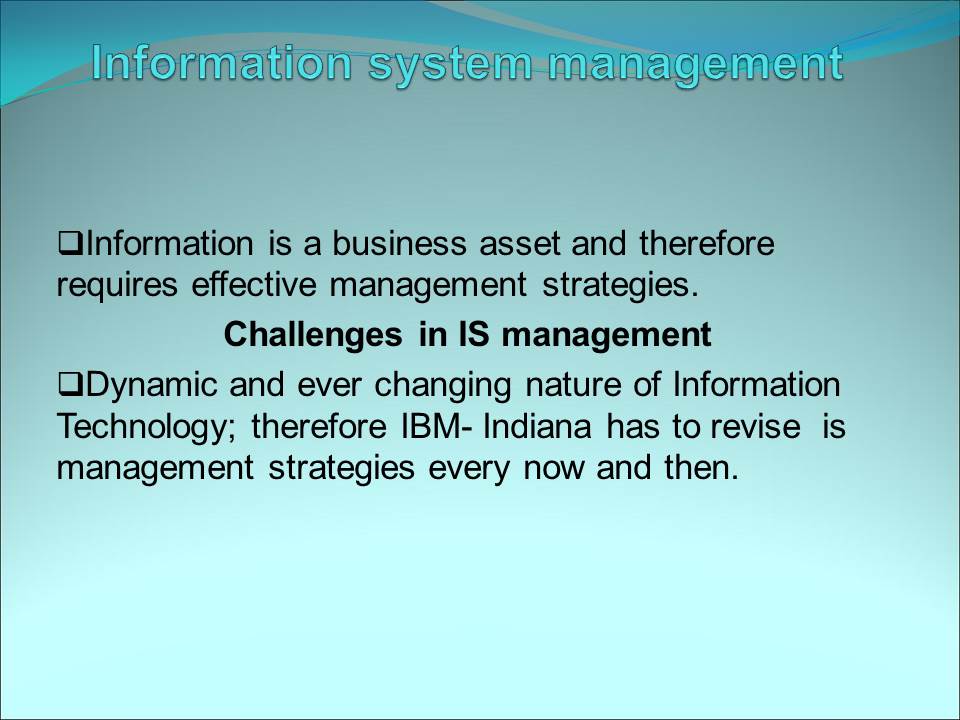
Objectives of IS management
- To enhance the efficiency of the business processes through automation.
- To facilitate the overall management effectiveness through the realization of the information needs of the business.
- Ensure that information systems and deliver the appropriate deliverables at an acceptable cost.
- Organizing the business resources that are required to develop and maintain the information system effectively at the capacity of the users.

Current state of affairs at IBM- Indiana
The telecommuting project is aimed at enhancing employee productivity, reduction of overhead expenses and increased customer satisfaction.
Benefits of telecommuting
- Elimination of the time and stress of the employees to get to the office.
- Elimination of the parking issues at the organization.
- Providing employees with more time for their family.
- Ease of management burden.
- Saving of the jobs at IBM – Indiana hence avoidance of the down sizing.
- Increased customer satisfaction.
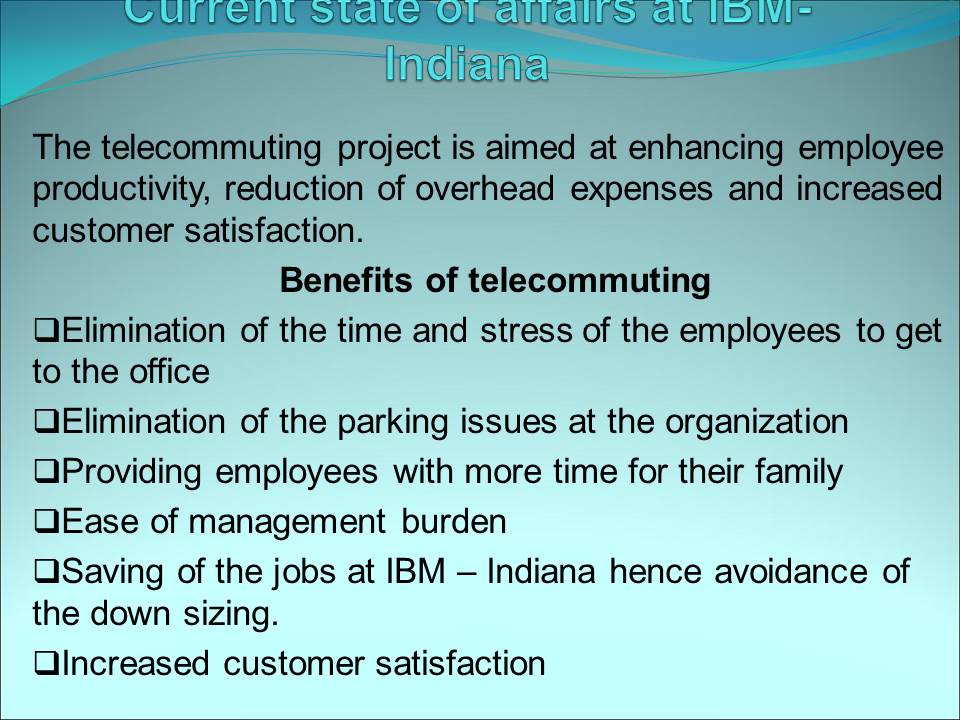
Challenges in the telecommuting project
- Negative perceptions by a number of employees because of a different working environment.
- Lack of proper laid down implementation and planning strategies.
- Issues with the initial technical support due to lack of proper planning.
- Employees lack technical assistance when they work from their homes.
- Expensive in terms of the initial set up since each employee requires his own set of equipments.

Risks due to improper IS management at IBM- Indiana
- Management related problems at the IBM- Indiana.
- Decline in the financial position of the business.
- Risks of future existence due to possible closure.
- Reduced market share due to lack of customer satisfaction.
- Reduced employee productivity since the business will not utilizing the benefits that are associated with the use of information technology.
Note: IS management is an important aspect of the business processes and requires commitment and involvement of the top level management and the low level staff.
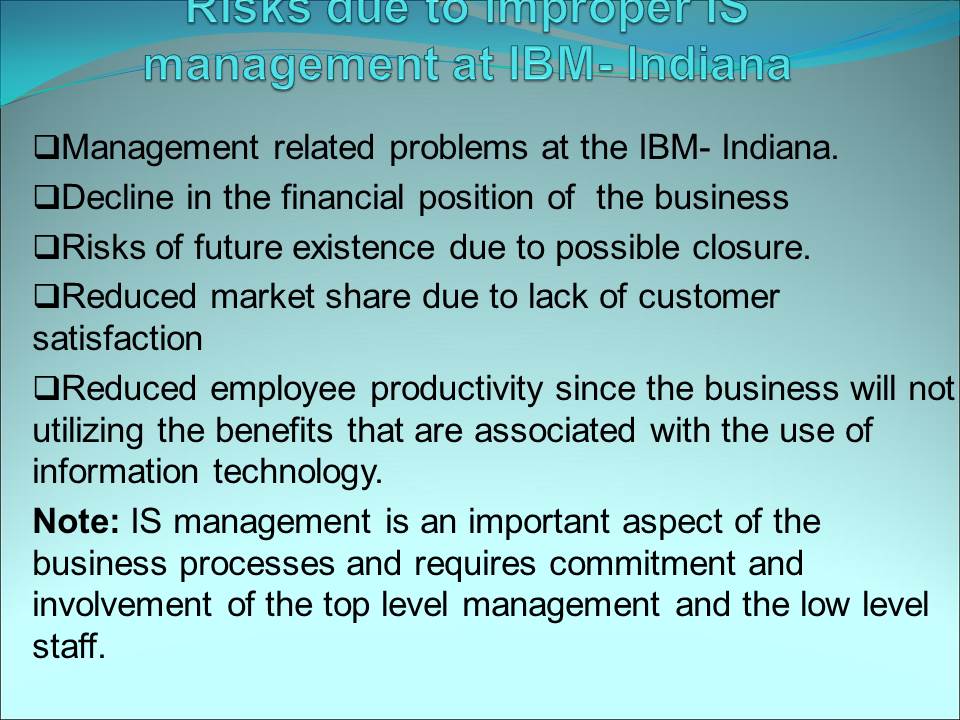
Key issues on IS management at IBM – Indiana
- IS development strategic planning.
- Information as a corporate asset.
- Evaluation of the IS effectiveness.
- Management and implementation of end user computing.
- Aligning the IT resources with the business processes.
- Ensuring competitive advantage.
- Realization of the role of IT in the success of the business.
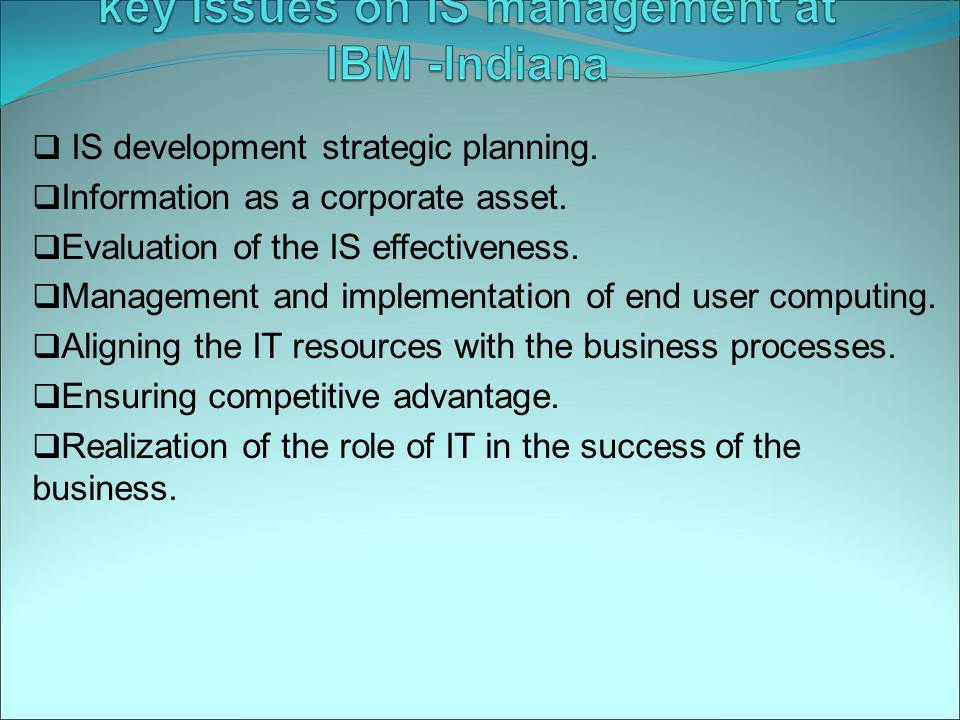
Proposed IS management approach at IBM- Indiana
Effective execution of the business processes is a key ingredient to ensure business continuity in the current competitive market place.
Therefore , the IBM – Indiana should adopt effective IS management strategies.
The proposed IS management approach is the Business Performance Management approach (BPM).
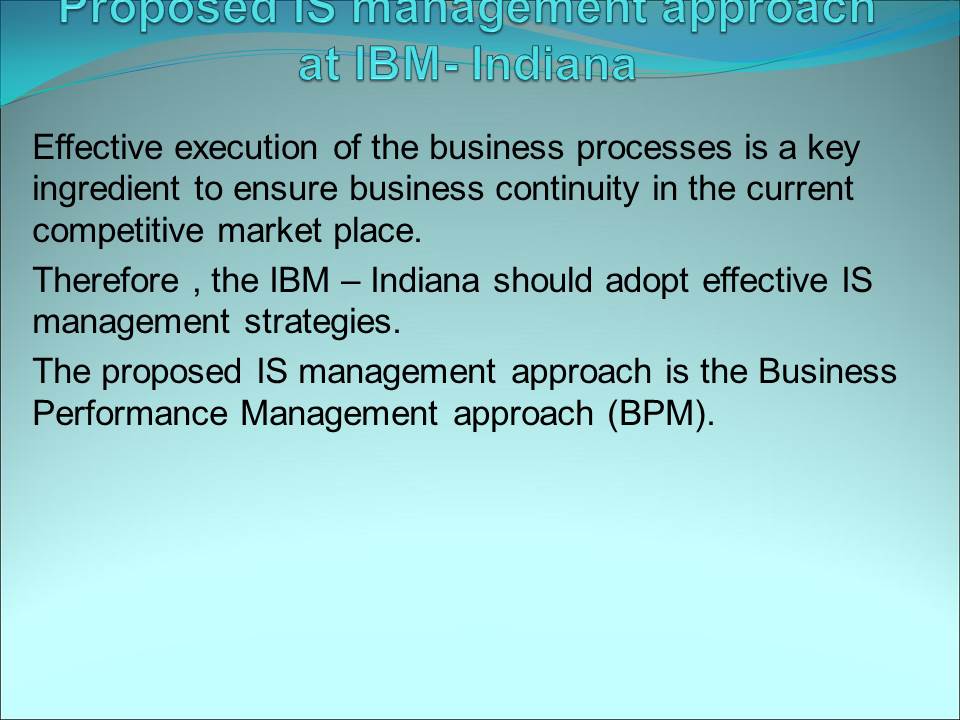
Business performance management
The BPM is a systematic IS management approach.
The BPM comprises of a combination of managerial and operational processes that have been integrated and directed towards the utilization of IT resources.
The BPM consists of four basic steps that aid in the implementation and management of IS:
- Strategizing;
- Planning;
- IS analysis and monitoring;
- Taking of corrective actions.
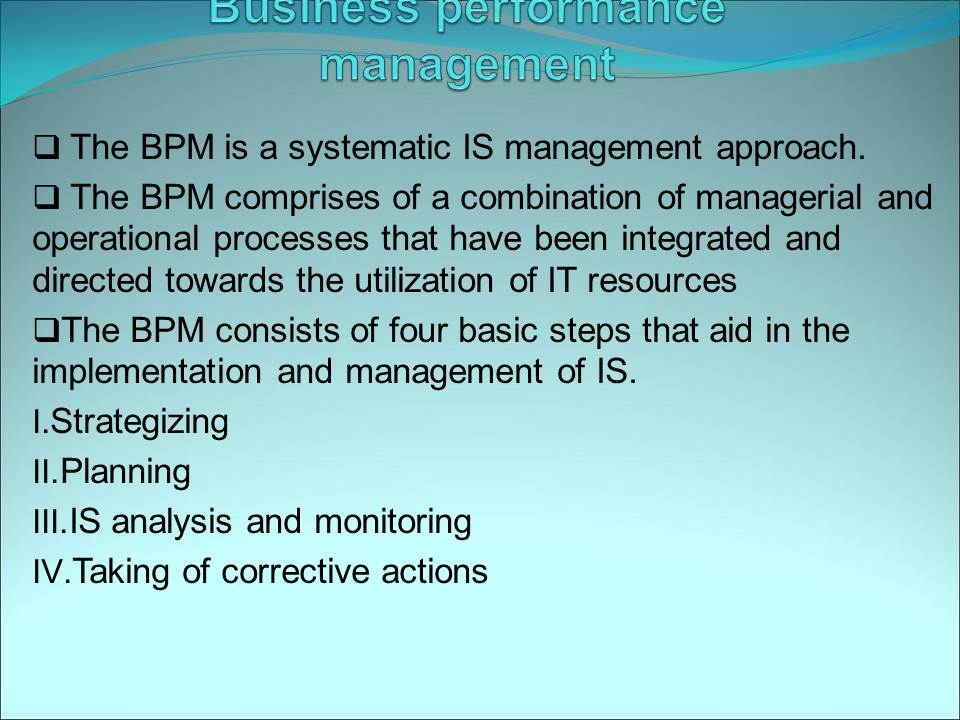
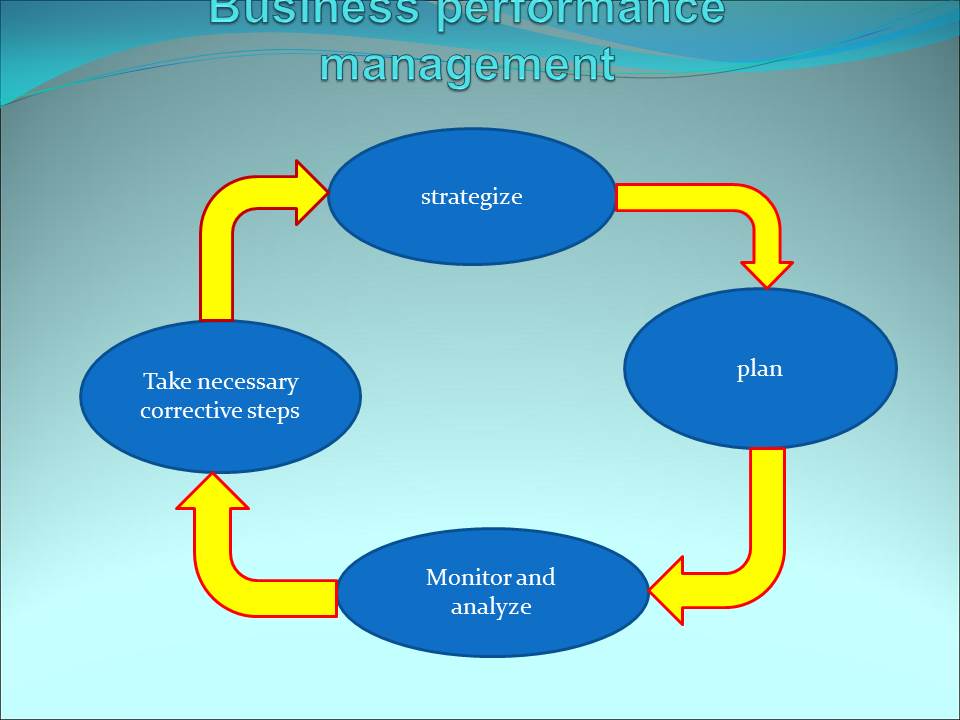
Strategizing
- Identify the IBM business requirements, goals and objectives.
- Establish key performance metrics that are used to evaluate business performance.
- Example is the evaluation of telecommuting on employee performance; employee productivity index is therefore a parameter for evaluation of the overall success of the business.
- The major challenge is determining the key performance indicators (KPI) at IBM; examples include reduction of overhead expenses due to use of IT through telecommuting, ease of management burden.
- Strategizing requires strategy mapping.
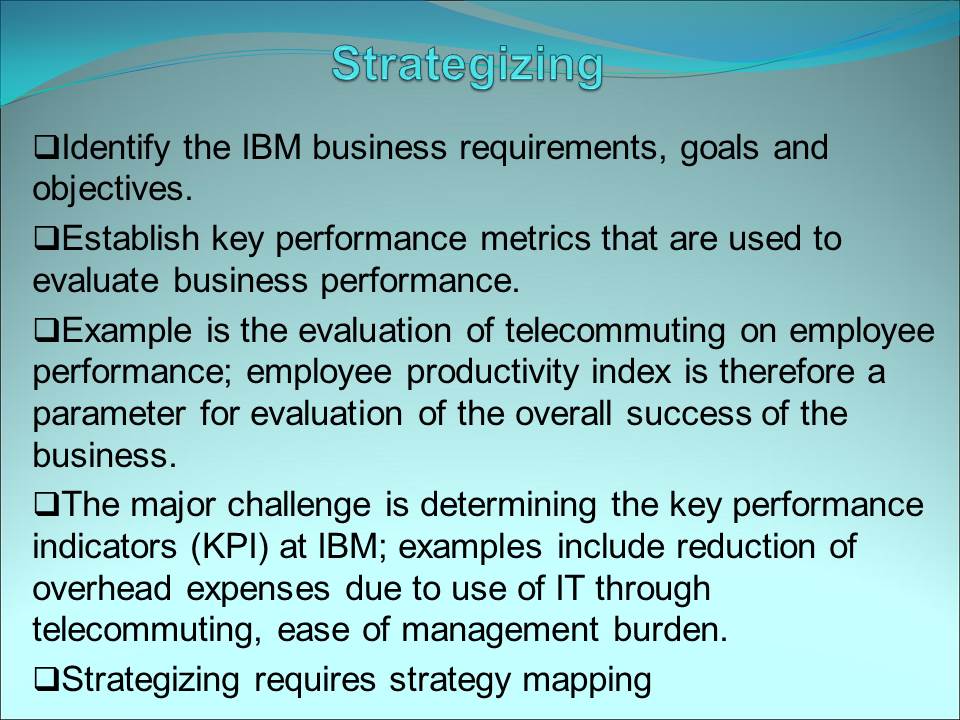
Planning
Establishing the course of action.
Requires active commitment and involvement of the top level management.
Preparations of detailed budgetary allocations concerning how the various resources will be allocated to the telecommuting project.
Each plan should describe how it contributes to the overall success of the business organization. For example telecommuting increases employee productivity and customer satisfaction.
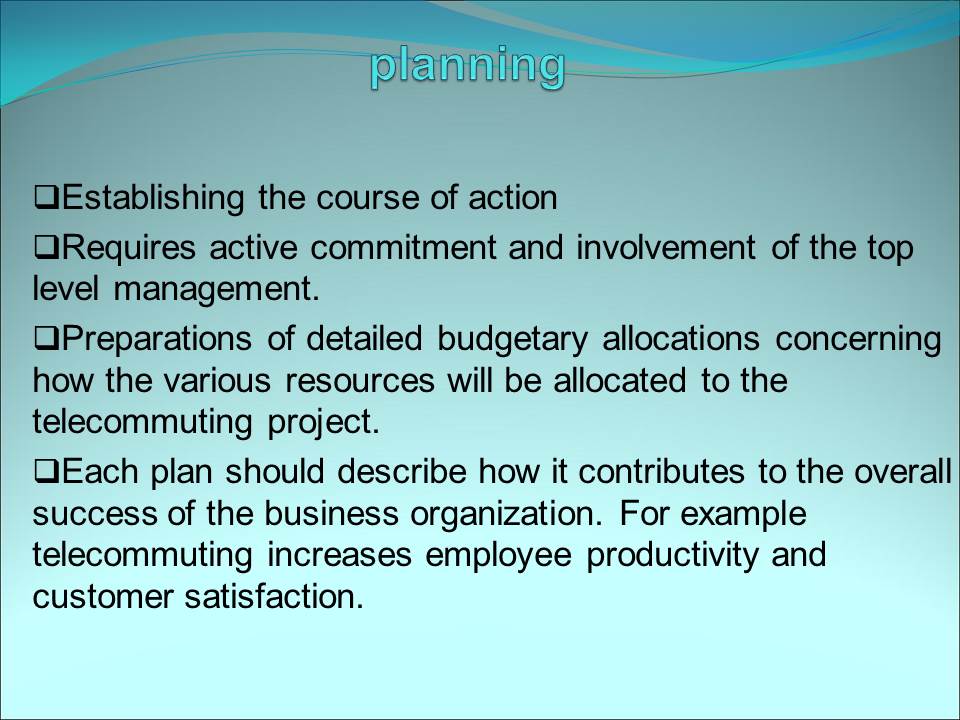
Monitoring and analysis
Constant checking of the information system.
Establishment of benchmark parameters for evaluating the extent to which they contribute to the overall success of the business.
Involves performance matching of the key performance indicators to the benchmark matrix values.

Implementation of corrective actions
- Involves monitoring of the progress of the IS.
- Notable changes are addressed in a timely and appropriate manner.
- The BPM approach aims at reducing the gap between the planning and execution phases in IS management.
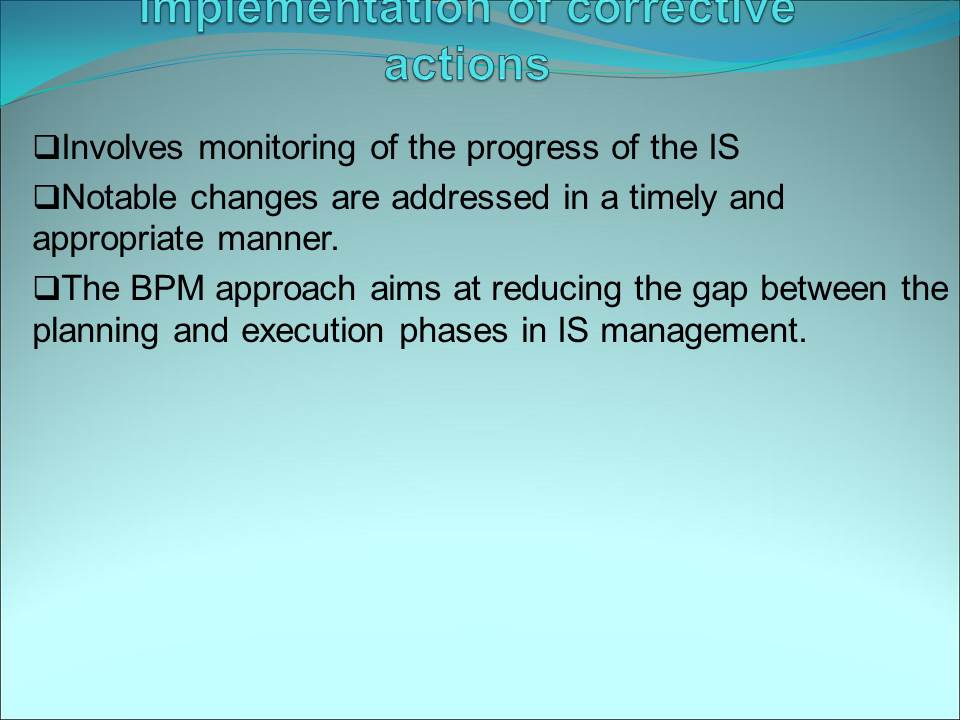
Recommendations
The telecommuting project should be implemented to facilitate customer access to the company’s information such as through the customers web based portal.
Development and installation of appropriate telecommuting management application software.
